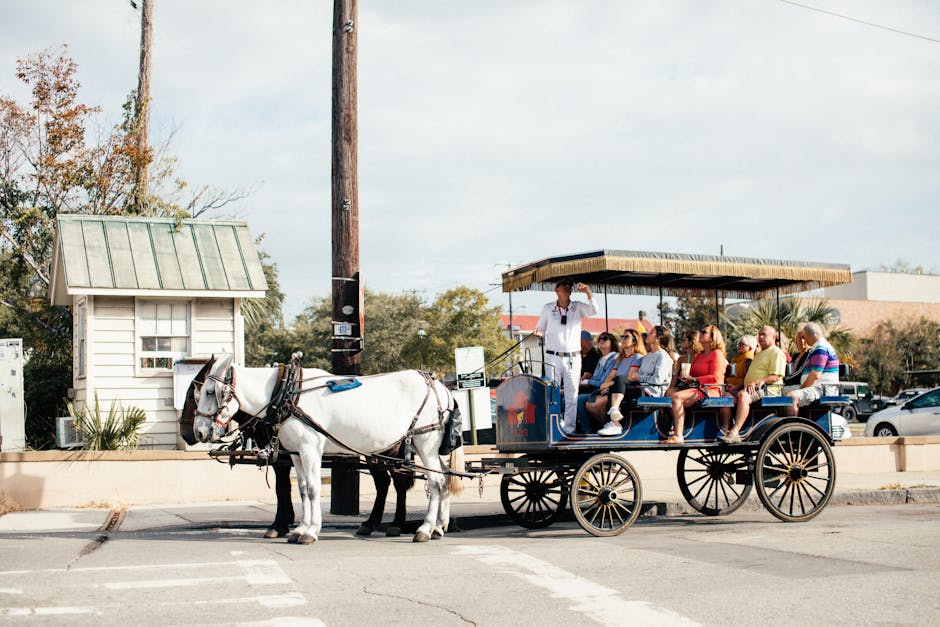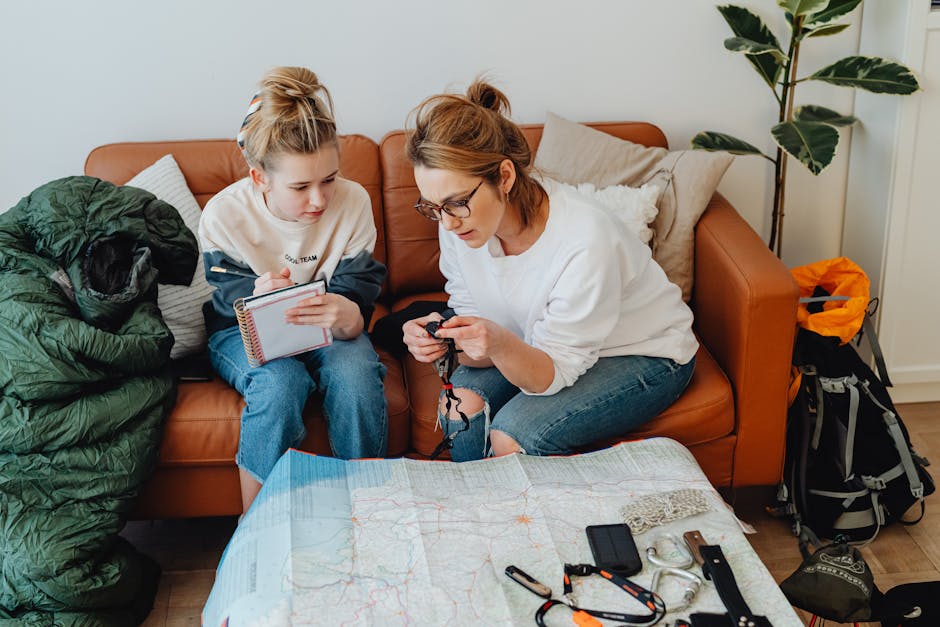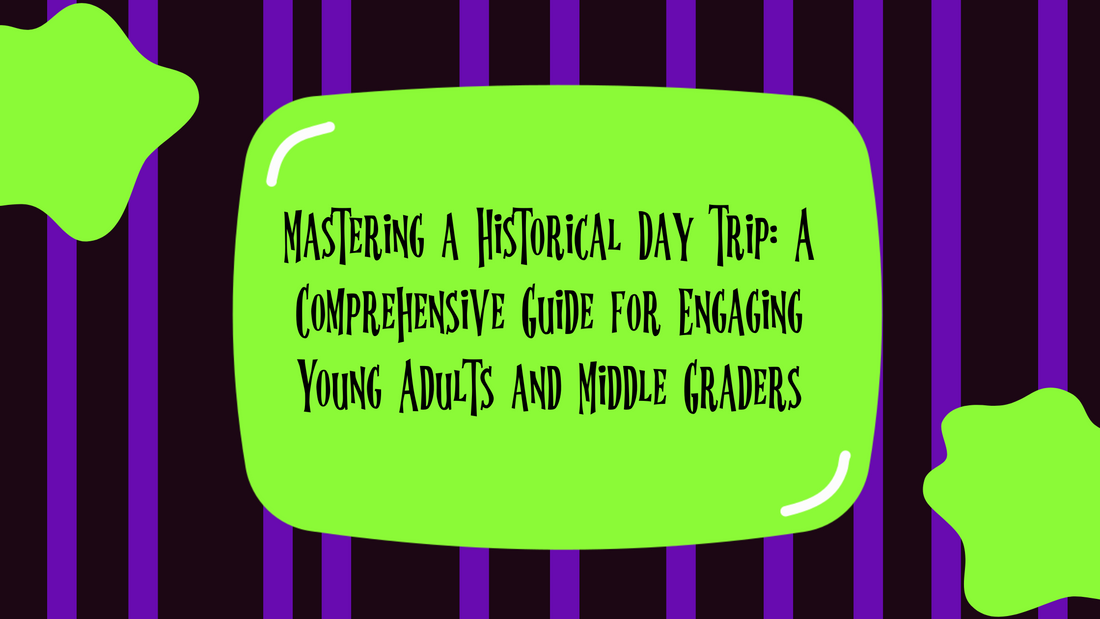As an affiliate, I earn from qualifying purchases, but this doesn't affect the reviews or recommendations—your trust is important to me!
Mastering a Historical Day Trip: A Comprehensive Guide for Engaging Young Adults and Middle Graders

Planning a Historical Day Trip: A Guide
Planning a day trip to a local historical site or museum that will engage both young adults and middle graders might seem like a monumental task. After all, finding the balance between educational travel and fun-filled exploration isn't always easy. However, this Historical Day Trip Guide is geared to turn this potential travel puzzle into an enjoyable and interactive educational trip.
Engaging Youth in Historical Tours
We understand that engaging youth in a historical tour isn't just about learning facts and dates; it's about inspiring curiosity, developing a respect for the past, and perhaps, even igniting a lifelong love for history. So, how do you choose age-appropriate activities, select child-friendly historical sites, and ensure an intriguing history fun for kids? Let’s start this historical learning journey together.
The first step of a successful Day Trip to a local historical site or museum hinges on careful trip preparation.
As the proverb goes, By failing to prepare, you are preparing to fail. Applying this adage to your historical day trip, you'll enhance it from being a simple outing into a rich, engaging, and rewarding Historical Learning Journey.
Take time in mapping out the historical site or museum. Give special attention to exhibits, historical landmarks, and guided trips that cater more to Young Adults and Middle Graders. Delve into the history of the site so that you can narrate tasty tidbits of information to them during the trip. Being armed with an arsenal of intriguing facts will certainly aid in engaging youth during the day.
Step two: captivate their minds.
The reality is, an Interactive Educational Trip cannot happen if the youngsters are not intrigued or excited to learn. The surefire way to stimulate curiosity in your young adults and middle graders is by turning the historical educational experience into an incredible story. Weave a narrative out of the history related to the site or museum. Convert the facts into a saga of explorers, unsolved mysteries, heroic acts, and exciting adventures. Igniting the imagination ensures that the trip preparation won't be just another bore to slog through!
A prime focus while visiting historic sites should be to connect the history of the place with concepts the young ones might have learned in school. This will illustrate a practical side to education and demonstrate that learning through travel is both possible and enjoyable. Provide context for the historical education and recognition of the importance of preserving our past. By making the connection between the pages of their textbooks and the physical presence of a historical landmark, you’d be marvelously boosting the relevance of their educational travel.
Speaking of making learning interesting and age-appropriate activities engaging, it's not just about the site or museum itself.
While the choice of the site plays a crucial role, interactiveness is the bedrock of youth engagement. Instead of just a show and tell, encourage them to involve themselves as well. History for kids becomes significantly more exciting when they are active participants in it. Encourage them to take notes of interesting facts they discover, click pictures of unusual monuments or artifacts they come across, and participate in any historical exploration activities the site might offer. This hands-on experience will aid in the retention of information and make the historical tour a momentous affair.
The adage, All work and no play makes Jack a dull boy’ is something you must remember when planning a trip to historical places. Incorporating elements of fun within the learning tool will keep spirits high among your young adults and middle graders. Strategize the trip in a way that it serves both as a splendid historical day trip as well as a fun day out. Many museums have areas for play and relaxation; use these to schedule in downtime. Some local historic sites also offer picnicking spots. If permitted, pack a picnic! It’s a nice way to relax after an afternoon of learning and exploring around. Making sure to incorporate these fun pauses will make the trip seem less like a field-trip and more like a grand adventure, making this Historical Day Trip a day to remember!

25 Essential Tips for a Successful Historical Day Trip with Middle Graders and Young Adults
- - Pre-trip planning: Researching the historical event, character, or era of interest
- - Selecting appropriate travel guides and maps
- - Designing an itinerary that caters to their interests
- - Bringing age-appropriate historical context and storybooks for on-the-go learning
- - Prioritising interactive exhibits in your planning
- - Bowing fun facts and trivia about the site to pique their interests
- - Encouraging kids to take photographs or video logs of the trip
- - Opting for guided tours for in-depth understanding and insights
- - Involving kids in pre-trip preparations to build excitement
- - Keeping travel essentials handy: snacks, water, sunscreen, hats, etc.
- - Planning quizzes or games themed around the historical location/place
- - Introduction of historical shows or documentaries related to the trip beforehand
- - Encouraging children to keep a travel journal or blog
- - Including exploratory visits to local markets/cuisine for a complete cultural experience
- - Leveraging mobile apps that provide interactive historic information
- - Encouraging curiosity and questions during the trip
- - Optional historical costumes to boost engagement in the theme
- - Virtual reality experiences where applicable for immersive history learning
- - Evaluation of parking, lodgings, and restaurants in vicinity beforehand
- - Discussion time in the evening to share what everyone has learned
- - Creating scrapbooks or albums after the trip to reinforce memories
- - Marking out the historical locations on a map for geographical context
- - Planning trips on special event days to experience reenactments or festivals
- - Incorporating downtime or relaxation time during the trip
- - Ending the trip with a family discussion on their favourite learnings and experiences

So there we have it - your ultimate guide to mastering a historical day trip
This guide is both engaging and educative for young adults and middle graders. By remembering to balance educational exploration with fun-filled activities and hands-on experiences, you're sure to inspire a newfound respect and curiosity for history in the minds of the young ones.
Remember, it's not just about imparting wisdom and facts, but also about sparking imaginations and creating memorable experiences. With the right preparation, a compelling narrative, and an interactive approach, your historical day trip could become the catalyst for a lifelong love of history.
Never underestimate the joy and power of learning through travel. So, grab the map, plan your route, and embark on a memorable historical learning journey that makes history come alive!
Other Stuff You May Like:
25 Essential Tips for a Successful Historical Day Trip with Middle Graders and Young Adults
- - Pre-trip planning: Researching the historical event, character, or era of interest
- - Selecting appropriate travel guides and maps
- - Designing an itinerary that caters to their interests
- - Bringing age-appropriate historical context and storybooks for on-the-go learning
- - Prioritising interactive exhibits in your planning
- - Bowing fun facts and trivia about the site to pique their interests
- - Encouraging kids to take photographs or video logs of the trip
- - Opting for guided tours for in-depth understanding and insights
- - Involving kids in pre-trip preparations to build excitement
- - Keeping travel essentials handy: snacks, water, sunscreen, hats, etc.
- - Planning quizzes or games themed around the historical location/place
- - Introduction of historical shows or documentaries related to the trip beforehand
- - Encouraging children to keep a travel journal or blog
- - Including exploratory visits to local markets/cuisine for a complete cultural experience
- - Leveraging mobile apps that provide interactive historic information
- - Encouraging curiosity and questions during the trip
- - Optional historical costumes to boost engagement in the theme
- - Virtual reality experiences where applicable for immersive history learning
- - Evaluation of parking, lodgings, and restaurants in vicinity beforehand
- - Discussion time in the evening to share what everyone has learned
- - Creating scrapbooks or albums after the trip to reinforce memories
- - Marking out the historical locations on a map for geographical context
- - Planning trips on special event days to experience reenactments or festivals
- - Incorporating downtime or relaxation time during the trip
- - Ending the trip with a family discussion on their favourite learnings and experiences











